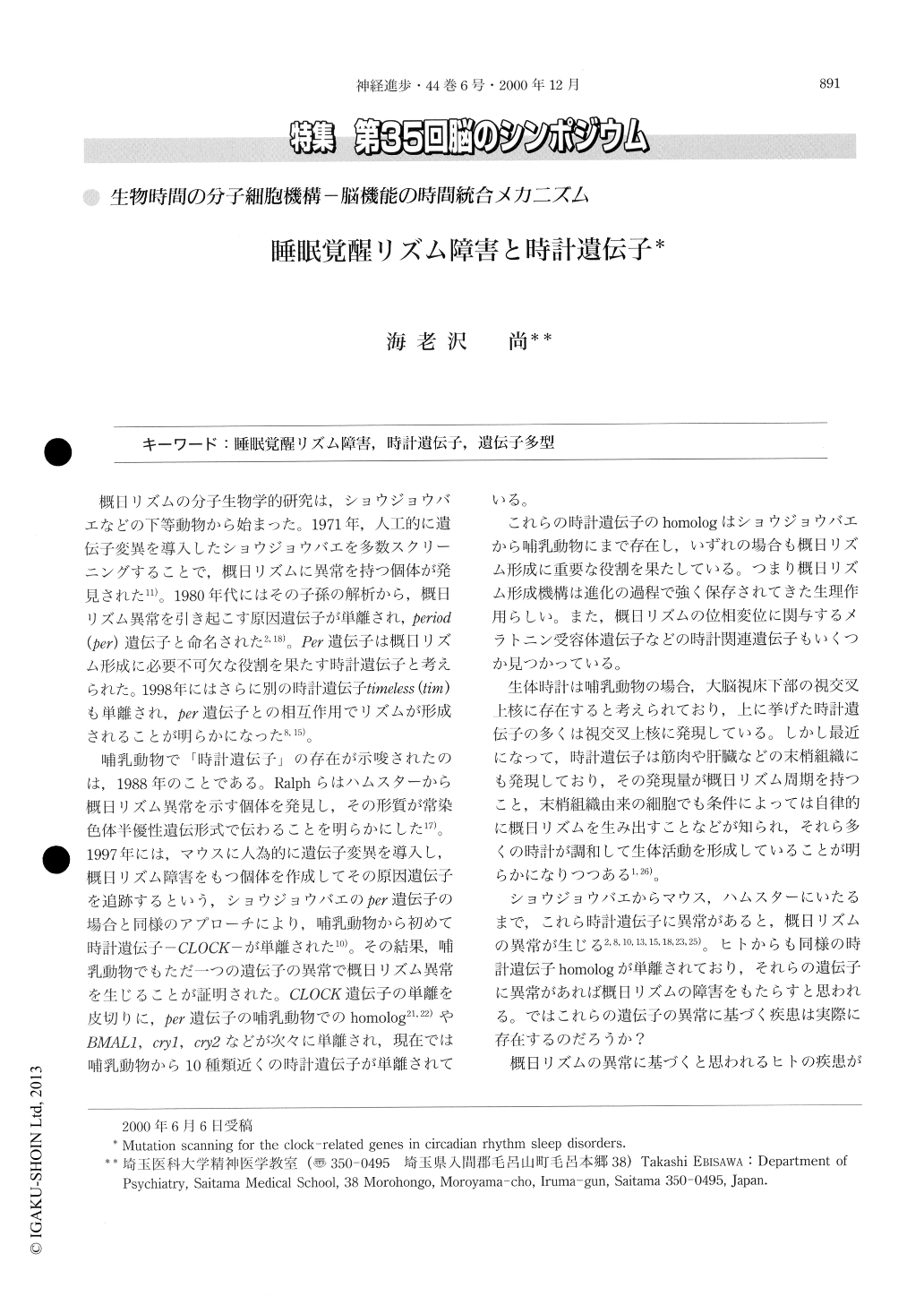Japanese
English
- 有料閲覧
- Abstract 文献概要
- 1ページ目 Look Inside
概日リズムの分子生物学的研究は,ショウジョウバエなどの下等動物から始まった。1971年,人工的に遺伝子変異を導人したショウジョウバエを多数スクリーニングすることで,概日リズムに異常を持つ個体が発見された11)。1980年代にはその子孫の解析から,概日リズム異常を引き起こす原因遺伝子が単離され,Period(per)遺伝子と命名された2,18)。Per遺伝了は概日リズム形成に必要不可欠な役割を果たす時計遺伝子と考えられた。1998年にはさらに別の時計遺伝子timeless(tim)も単離され,per遺伝子との相互作川でリズムが形成されることが明らかになった8,15)。
哺乳動物で「時計遺伝子」の存在が示唆されたのは,1988年のことである。Ralphらはハムスターから概日リズム異常を示す個体を発見し,その形質が常染色体半優性遺伝形式で伝わることを明らかにした17)。1997年には,マウスに人為的に遺伝子変異を導入し,概日リズム障害をもつ個体を作成してその原因遺伝子を追跡するという,ショウジョウバエのper遺伝子の場合と同様のアプローチにより,哺乳動物から初めて時計遺伝子―CLOCK―が単離されだ10)。その結果,哺乳動物でもただつの遺伝子の異常で概日リズム異常を生じることが証明された。
Recent progress in chronobiology enabled us to elucidate the molecular mechanism of circadian rhythm sleep disorders. We are analyzing clock-related genes for mutations in the disorders. Two missense mutations, R54W and A157V, have been found in melatonin la receptor gene. Carrier frequencies of the mutations in non-24-hour sleep-wake syndrome were about 3-fold and 2-fold higher, respectively, compared to those in normal controls. When expressed in COS-7 cells, R54W mutant receptor showed significantly reduced Bmax and slightly enhanced affinity compared to the wild type receptor.

Copyright © 2000, Igaku-Shoin Ltd. All rights reserved.


